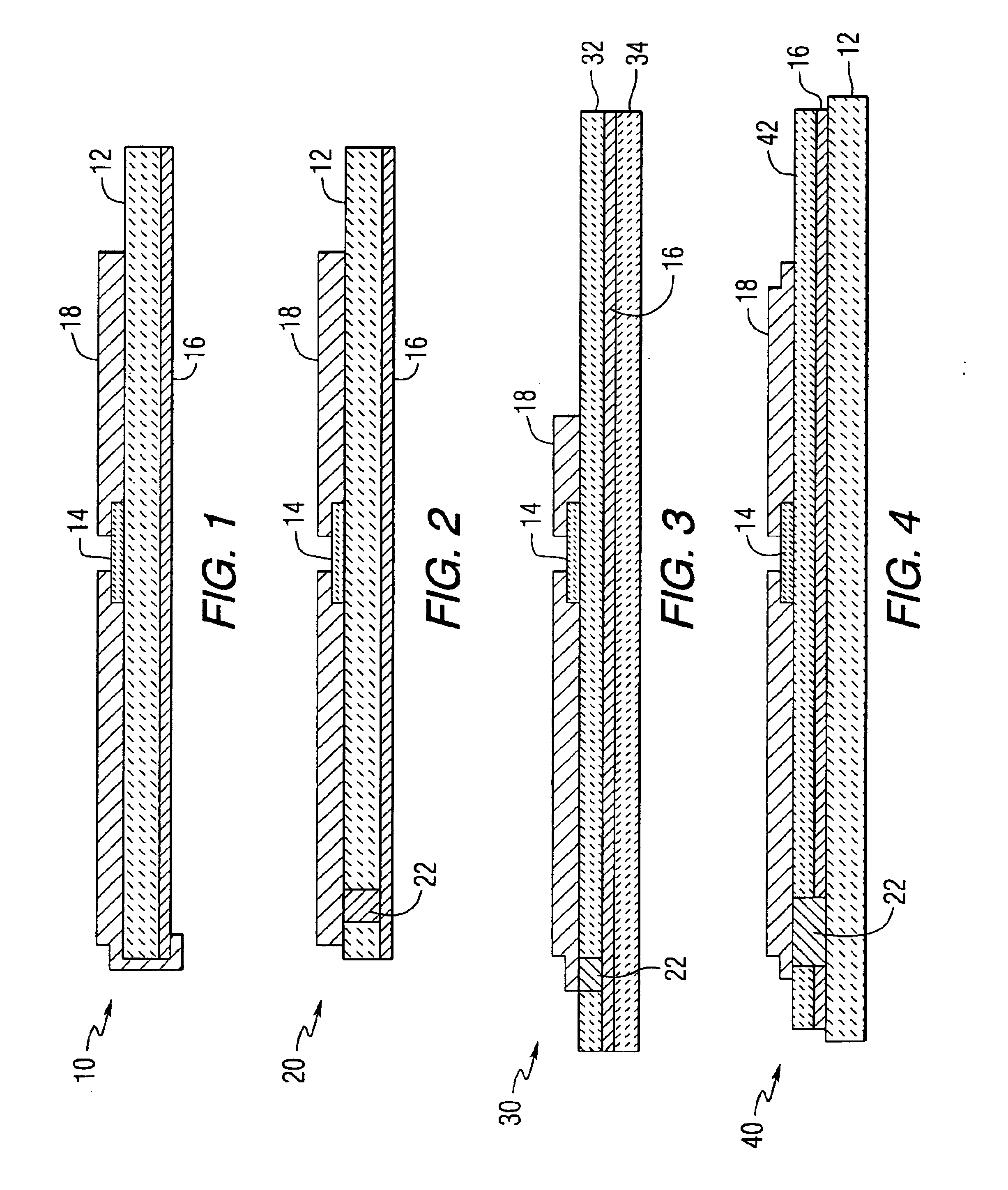Tunable dielectric compositions including low loss glass
a dielectric composition and glass technology, applied in the field of tunable dielectric materials, can solve the problems of low loss and high tunability, and achieve the effect of improving breakdown strength and superior electronic properties
- Summary
- Abstract
- Description
- Claims
- Application Information
AI Technical Summary
Benefits of technology
Problems solved by technology
Method used
Image
Examples
Embodiment Construction
[0023]The present invention provides electronically tunable materials comprising an electronically tunable ceramic and a low loss glass additive. The materials may also include additional additives, such as metal silicates, metal oxides and / or metal titanates. The materials have microwave properties that can be used for building RF components, devices and antennas. The materials have very low microwave loses in comparison with conventional materials.
[0024]An embodiment of the invention provides a combination of low loss glass frits with dielectric powders in such a way that tunable capacitive devices can be formed onto low cost substrates, such as high alumina substrates, at temperatures well within their fireability range, e.g., less than 1,300 or 1,200° C. For example, the present materials may be sintered at temperatures ranging from about 850° C. or 900° C. to about 1,000° C. or 1,100° C. In addition, the presence of the glass additive may significantly increase the life of such...
PUM
| Property | Measurement | Unit |
|---|---|---|
| frequency | aaaaa | aaaaa |
| temperature | aaaaa | aaaaa |
| temperature | aaaaa | aaaaa |
Abstract
Description
Claims
Application Information
 Login to View More
Login to View More - R&D
- Intellectual Property
- Life Sciences
- Materials
- Tech Scout
- Unparalleled Data Quality
- Higher Quality Content
- 60% Fewer Hallucinations
Browse by: Latest US Patents, China's latest patents, Technical Efficacy Thesaurus, Application Domain, Technology Topic, Popular Technical Reports.
© 2025 PatSnap. All rights reserved.Legal|Privacy policy|Modern Slavery Act Transparency Statement|Sitemap|About US| Contact US: help@patsnap.com


